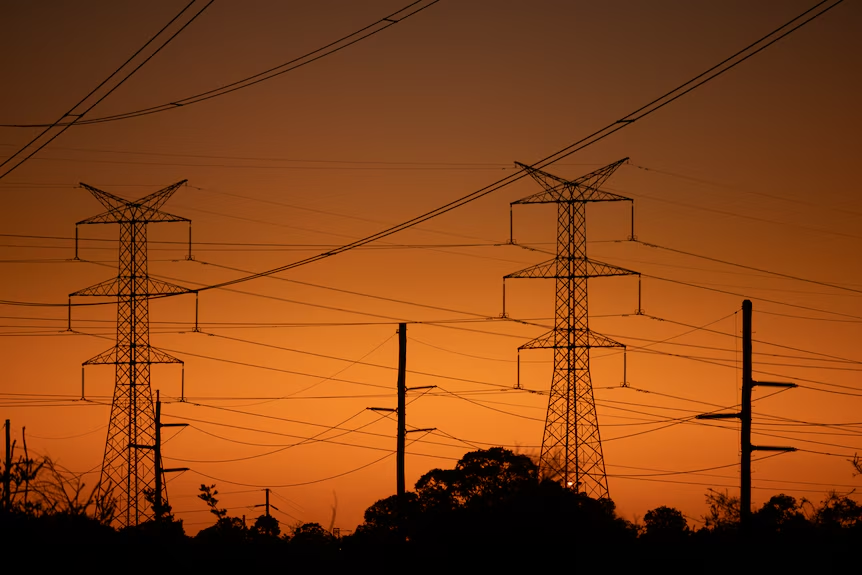
A 12-month trial in Exmouth has demonstrated that electric vehicles can be used as flexible grid assets to help manage peaks and troughs in electricity demand. Conducted by state-owned Horizon Power, the trial tested a bi-directional charging management system that used parked EV batteries to both absorb excess generation and supply power back to the local network when needed.
What happened in Exmouth
The trial, carried out in the north-west WA town of nearly 3,000 people, lent a fleet of Nissan Leafs to local participants and connected them to Horizon Power’s Distributed Energy Resource Management System (DERMS). The platform sent signals to the vehicles’ batteries to either charge during periods of low demand (or excess renewable output) or discharge to the grid at times of high demand.
Horizon Power’s executive general manager of technology and digital transformation, Ray Achemedei, described the arrangement as a live test of whether distributed EV batteries could deliver tangible benefits to both customers and the utility without disrupting everyday use. The DERMS was able to:
- Reduce local peak load by discharging stored energy from EV batteries during high-demand periods;
- Ease pressure on the network by scheduling fast charging for vehicles when demand was low; and
- Maintain minimum state-of-charge (SoC) safeguards so drivers retained sufficient range for spontaneous travel.
Participant feedback was notably positive. Regional users-often sceptical about EVs because of range concerns-embraced the vehicles and the trial, with some reluctant to return the Leafs once the trial finished. Local leaders described the project as progressive and a potential pathway to a more environmentally sustainable energy future for small towns.
Why Exmouth made sense
Small, tourism-driven towns like Exmouth experience periodic surges in electricity demand, placing stress on local networks that are often separate from the main grid and rely on limited generation and storage. In these systems, parked EVs represent a valuable, mobile pool of energy capacity that can be orchestrated to increase resilience, integrate local renewables and reduce reliance on peaking generators.
The trial validated the concept in real-world conditions on a small system, providing Horizon Power with operational experience in coordination, communications, and customer engagement-critical elements for broader uptake.
Technical approach and standards context
The Exmouth project relied on bi-directional charging: the ability to flow electricity both to and from a vehicle battery. Historically, Nissan Leaf owners have been able to take advantage of V2G functionality via the CHAdeMO standard, which supports vehicle-to-grid operations. Globally, there has been movement toward enabling V2G over CCS using the ISO 15118 suite (including features such as Plug & Charge and smart-charging communications), but industry adoption and hardware availability vary by manufacturer and market.
DERMS platforms like Horizon’s are central to unlocking V2G at scale. They act as the orchestration layer between grid needs, market signals and distributed energy resources (EVs, batteries, rooftop solar), enabling coordinated responses such as peak shaving, frequency response and renewable firming.
Where the technology could help most
- Peak management: EV batteries can provide short-duration power during peak periods, shaving local peaks and reducing the need for costly peaking generation.
- Renewable integration: Smart charging can absorb excess solar or wind, while discharging can supply the network when renewable generation falls.
- Microgrid resilience: In isolated or semi-isolated systems, aggregated EV capacity can increase reliability and reduce dependence on diesel generators.
- Customer value: Aggregators or utilities could offer owners incentives-reduced tariffs, payments or credits-in return for managed access to their batteries.
Barriers and why there’s no immediate wider rollout
Despite the promising outcomes, Horizon Power has no plans for immediate broad deployment. That caution reflects several unresolved issues at the national and technical levels:
- Standards and interoperability: While CHAdeMO-enabled vehicles and some pilot hardware support V2G today, a broader industry shift toward CCS and adoption of ISO 15118 V2G functionality is still unfolding. Australia needs harmonised technical standards for secure, interoperable V2G operations.
- Regulatory and market frameworks: Metering, settlement, and compensation mechanisms for energy exported from EV batteries must be agreed upon. Rules are required to define who gets paid, how services are procured, and how V2G participates in wholesale and ancillary service markets.
- Customer protections and experience: Any V2G model must protect drivers’ mobility needs through clear minimum SoC guarantees, transparent remuneration and assurances about battery health and warranty impacts.
- Business models and aggregators: Effective V2G will rely on aggregators and commercial arrangements that balance grid needs, participant incentives and owner choice.
- Battery degradation concerns: While practical experience and modelling suggest manageable degradation under many V2G regimes, warranties and clear evidence are still important for consumer trust.
National context and the path forward
Across Australia there has been growing interest in V2G through pilots, research and utility-led trials. Market operators and energy policy bodies are increasingly focused on integrating electrification into planning scenarios. The Australian Energy Market Operator (AEMO) and other stakeholders have identified EVs as both a challenge and an opportunity for system security and flexibility.
Technological trends suggest momentum: vehicle manufacturers and charger suppliers are gradually preparing for two-way power flows, and communications standards such as ISO 15118 are gaining traction internationally. As EV uptake accelerates, the scale economics for V2G aggregation and the need for flexible resources in distributed networks will strengthen the commercial case.
For regional networks and islanded systems in particular, the Exmouth trial illustrates a practical, near-term application where V2G can meaningfully enhance resilience and renewable utilisation. However, broader operational rollout in Western Australia and nationally will require coordinated agreement on business rules, metering, settlement and interoperability-work that will involve regulators, utilities, automakers and the broader energy industry.
Conclusion
Horizon Power’s Exmouth trial is a pragmatic demonstration that electric vehicles can act as distributed energy resources, helping stabilise a small, tourism-driven grid while preserving customer experience. The project validated the technical operation of DERMS-coordinated V2G and produced strong local engagement, but it also highlighted the broader systemic work required before widescale deployment is prudent: harmonised standards, regulatory frameworks and commercial models must be finalised. As EV adoption grows and standards mature, vehicle-to-grid services could become an important tool for strengthening grid resilience and accelerating the integration of renewables-particularly in remote and regional communities.
Frequently asked questions
What is vehicle-to-grid (V2G) technology?
V2G allows electricity to flow both to and from an electric vehicle’s battery. When parked and connected, a vehicle can charge from the grid or discharge stored energy back to the grid to help balance supply and demand.
How did Horizon Power’s DERMS manage the EVs in the trial?
The Distributed Energy Resource Management System issued signals to the vehicles to either charge or discharge at specified times. It factored in grid conditions and enforced minimum state-of-charge limits so drivers could still use their cars when needed.
Will V2G damage my EV battery?
Battery degradation from V2G depends on how often and how deeply batteries are cycled. Trials and research indicate that with well-designed operational rules and limits, additional degradation can be managed and may be outweighed by payments or tariff benefits. Manufacturers’ warranties and real-world evidence remain important for consumer confidence.
Why aren’t V2G systems being rolled out widely yet?
Key barriers include the need for agreed technical standards and interoperability, metering and settlement frameworks, regulatory arrangements for payments, and clear customer protections. These need alignment before commercial-scale rollouts can be broadly implemented.
Which EVs and chargers support V2G now?
Historically, CHAdeMO-equipped vehicles (for example, many Nissan Leafs) have supported V2G. Global movement toward enabling V2G over CCS via ISO 15118 is underway, but manufacturer implementation and charger hardware availability vary. Consumers should check vehicle and charger specifications for V2G capability.
About EV Evolution
EV Evolution is the leading online platform dedicated to Australian electric vehicle owners and enthusiasts. We foster a vibrant community, delivering essential EV news and insights, and enhancing user engagement through our innovative, AI-powered chatbot for dynamic discussions. Our mission is to empower Australian electric vehicle owners and enthusiasts by fostering a vibrant, AI-driven online community that connects, informs, and advances the nation’s electric vehicle landscape.




